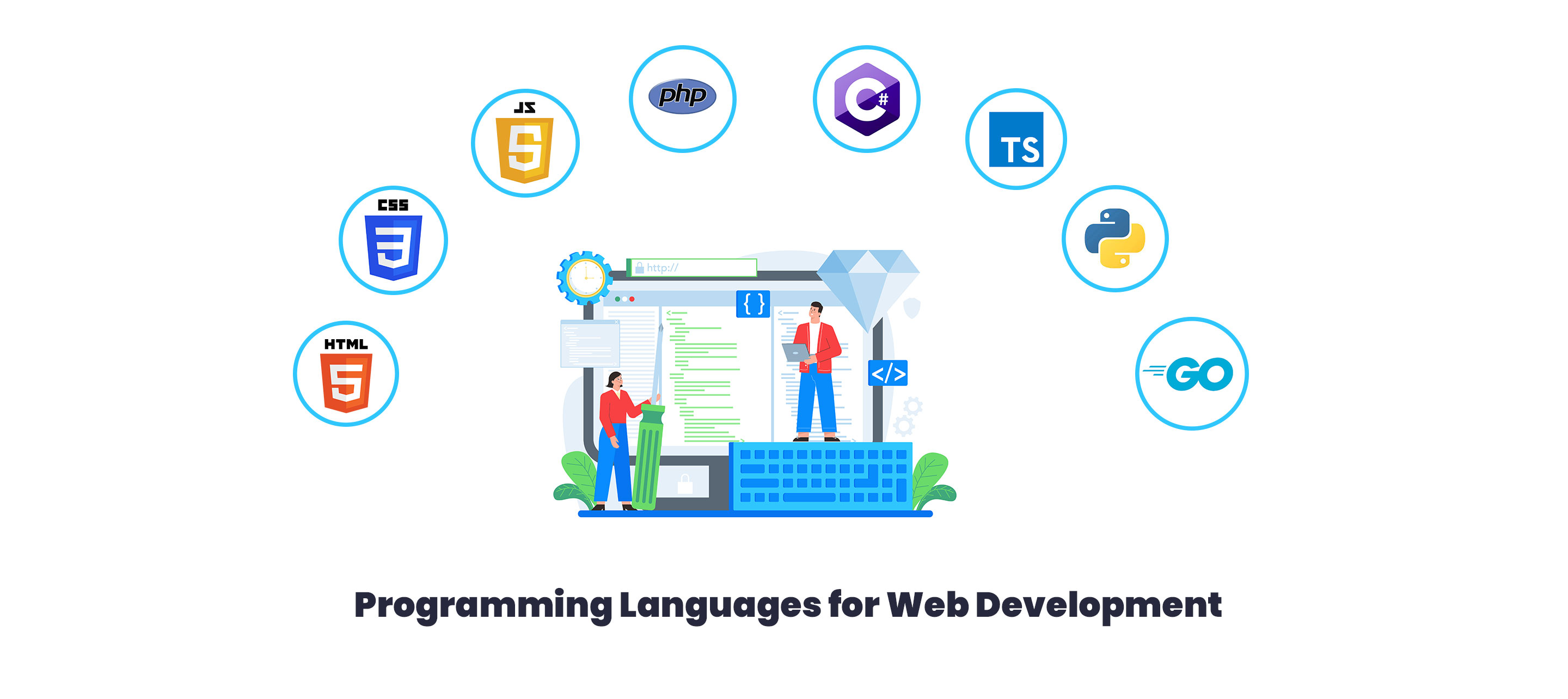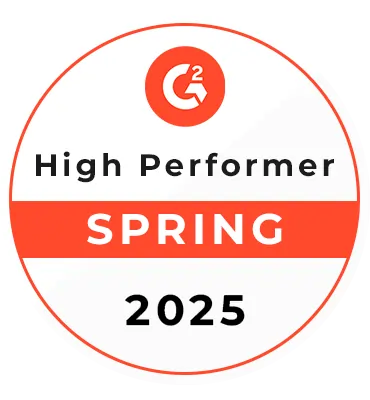The Beginner’s Guide to Website Development
Manish Kumawat
Last Updated on: 30 September 2025
This blog could be a valuable resource for both experienced and aspiring programmers in need of a point of clarification or words of encouragement.
It is critical to conduct research prior to making such an important decision as changing jobs. Perhaps you've always wished you could be a developer. The time you spent experimenting with HTML and CSS coding on the backend of your hobby blog may have also made you curious about what it's like to work as a web developer. No matter how you got here, you have questions, and we have the answers.
We'll go over the fundamentals of website development, the process of creating a website, and additional resources for anyone interested in learning more about programming or becoming a developer themselves in this book.
What makes web development crucial?
The internet will always be available. In fact, it has given rise to the primary global portal and platform for research, communication, education, and entertainment. As of 2022, more than half of the world's population, or 4.66 billion people, were Internet users.
With the number of Internet users steadily increasing, it is not surprising that the website industry is rapidly expanding. There will be a 13% increase in web developer employment between now and 2030, which is a much faster rate of growth than for the majority of other technological professions.
How do web developers' job prospects look?
If you're interested in becoming a website developer after learning about what they do, you'll be relieved to know that there are more job opportunities available. Today, having a website is essential for a business to remain competitive. The use of a simple internet template is insufficient if a company wants to give its customers a personalized, genuine experience. Web development firm Fulminous Software believes that this will help the industry remain strong going forward.
It's wonderful to know that demand is high, but what about the career options for web developers? Most people start out as junior web developers and work their way up to senior developer positions, but after that, things could get interesting. In the future, you might decide to lead a group of programmers or you might decide to focus on a particular facet of web development.
The Procedure for Creating a Website

It is more challenging to build a website than it is to count to three. Every website, programming language, and resource has its own development process. In the section that follows, the steps involved in creating a website are thoroughly explained, along with a quick rundown of the most widely used programming languages and content management system options.
Create a strategy.
Develop a strategy for your website in collaboration with teams and staff members from across your organization before putting pen to paper or fingers to keyboard.
Consider the following issues before creating your first site draught:
- What do you want your website to achieve?
- What do you expect visitors to your website to do?
- What type of website do you make?
- What kind of content, and how much of it, do you hope to publish?
- Why is this information being presented?
- How would you design your website for easy navigation?
- How much money do you have?
You'll be able to make decisions that are justifiable by discussing your objectives with the teams in charge of website design, marketing, and finances after you've made them clear through your responses.
To put it simply? Developing a strategy early on is much easier than trying to reverse your progress after you've run into a problem.
2. Establish a design concept (Wireframe)
Every great website starts with a plan. The term "wireframe" is used by developers to describe this. It doesn't have to be a formal document; it could just be your idea of how you want your website to look, which will serve as direction and a place to start for both you and your developers. It can be illustrated using whiteboards or apps such as Invision, Slickplan, or Mindnode.
Using wireframes, which are purely visual tools, will help you understand where text and images should be placed on various web pages. Use blank boxes and "dummy text" to get a preview of how your content will look when viewed from the front. By providing a visual representation, wireframes can assist your developer in understanding what you have in mind.
3. Make a rough sitemap.
The following step is to create a sitemap, which is not to be confused with a map. An XML sitemap is an XML file used by search engines to crawl and find websites. A sitemap is similar to a business plan in that it provides a developer with the details needed to match your vision. Your developer can create a sitemap for you, or you can do it yourself.
When designing your website, keep the following questions in mind:
- Do you need specific pages?
- What will the pages' subject matter be?
- What types of categories could you make for those pages?
- How are the pages on your website organized?
- What links will be used to connect the pages?
- Which parts of your website and user experience are absolutely essential?
- What files or categories could be combined or removed?
Again, speaking with various teams within your company is a good idea. Your content strategy team's or SEO team's suggestions will be extremely helpful in classifying and organizing the links on your pages. If not, fluminous software will advise you on the most effective course of action instead of having you speak with us.
4. Create the code for your website.
The next step in the website's development is to write the code. Developers will use a variety of coding languages (such as design, interactivity, and so on) for the front end and back end of websites, as well as for other site functionality. To create and manage your website, these various languages work together.
The most well-known languages will be the first to be discussed.
•Hyper Text Markup Language (HTML) - is used, and was in the 1990s. It forms the basis of every website and contains the bare minimum requirements for creating one. Even if HTML can be used to create a website, it does not appear to be very appealing.
Programming languages like CSS and JavaScript can be used to improve and alter the fundamental website structure that HTML codes produce. The most recent version, HTML5, is frequently used in the creation of mobile applications because it supports cross-platform browser functionality.
CSS (Cascading Style Sheets) -The 1990s came to an end when it was founded. Design elements such as fonts, colors, and structures are used to improve the overall "look" of websites. CSS gives developers the ability to alter your website to reflect the aesthetic you had in mind in addition to being cross-browser compatible like HTML5.
• Using JavaScript: The jewel of a programming language is JavaScript. JavaScript, which was created in the middle of the 1990s, can be used to add business logic to websites. Developers use it to add interactive components, such as animations, tasks inside particular pages, and automation, in an effort to enhance the user experience.
JavaScript is evolving rapidly. JavaScript has overtaken C++ as the most popular programming language in the world, despite initially being mocked as a "toy" language. The programming language has developed into a back-end language. Browsers can understand it as their first language, and some have even mentioned using machine learning to aid in this process.
The "big three" of web programming are HTML, CSS, and JavaScript. On almost every website, they are utilized in some way. Although there are many others, including server-side languages like C++, Python, and SQL, understanding these three is essential for web development.
5. Construct the website’s back end -
The hardest part of creating a website is undoubtedly writing the code, but it's not the only one. It's also necessary to build the site's architecture and design from the ground up.
The back end is responsible for handling the data required for front-end functionality. It is made up of two critical components:
• Databases store, organize, and process data so that it can be retrieved by server requests.
• Servers, which include the hardware and software, are the building blocks of your computer. Servers are responsible for sending, managing, and receiving requests for data. They establish a connection between the client and the database. The browser will essentially be telling the server, "I need this information," so the server will be able to get it from the database and give it to the client.
These elements work together to form the foundation of any website. While building your website, backend programmers will set up a few things.
• The logic code of your website is a set of directives that specify how various requests will be processed and how its objects will talk to one another.
• Organizing, managing, and retrieving data for your website will all be done through your database management.
• Your website will be hosted through your infrastructure. While hosting your own website gives you more flexibility, it is far more expensive and requires your own server security and upkeep.
Facebook, for example, requires information on the people on your Friends list, the events you've attended, the posts you've written, and more. All of this is saved as "data" in a database. They wouldn't have any of that information if there wasn't a database-backed back end. On the other hand, a website that only provides information and doesn't request any personal data from users wouldn't need a back end.
Therefore, back-end innovation is not absolutely necessary if you lack any data. That doesn't mean you shouldn't learn the fundamentals, though. It could be required at any time.
6. Your website’s front end should be built -
The front-end components are crucial because they affect how users, clients, and visitors will engage with your website.
HTML, CSS, and JavaScript are all used in front-end (also known as client-side) development. Furthermore, it controls things like typography and fonts, placement, responsiveness, browser compatibility, navigation, and so forth. More of the elements from your wireframe and your original site concept will be visible in this section.
When technology and user preferences change, client-side code is more likely to become outdated much faster than back-end programming. In situations like this, coding tools (like the ones listed below) are quite helpful.
7. Get yourself a domain name
An IP address will now be assigned to your website. It also requires a domain name, which is a memorable website name that visitors may use to find your website.
Websites like Hover and GoDaddy may be familiar to you. You can buy a domain name and register it with the company using these services (offered by the Internet Corporation for Assigned Names and Numbers, or ICANN). The majority of domain registrations last for a year before needing to be updated. You may also buy a domain name through website builders and hosting providers like WordPress and Squarespace.
8. Start building your website -
You're almost ready to publish your work online once you've established a domain name and connected it to your server.
However, before launching officially, there are still a few things you need to double-check. You should also assign team members roles, thoroughly test your website for bugs, make it SEO-friendly, and conduct one last review before "turning the switch" and making it live.
As previously stated, create your own website. Moreover, just call or email us, and our website developer expert will assist you.
With each passing year, web development advances at an exponential rate. Every now and again, when developers look for new methods to innovate, new web technologies are found. If business owners who use digital marketing are going to keep their competitive edge and draw in new clients, they need to anticipate these changes and adapt to them.
For beginners just starting out: Learn the foundations of web design.
It will help you become a desirable employee or a specialist for your own website-development company if you learn these basic web design principles.
• First, learn HTML and CSS - To become a skilled web developer, you need to master these fundamental and important tools. because most of the work is based on HTML and CSS.
• Learn jQuery and JavaScript first; they will be used to bring your dynamic web pages to life. If you wish to work as a front-end web developer, these will be your primary tools, along with HTML and CSS.
• As you progress through your online classes, practice your abilities frequently. Don't just blindly follow instructions; instead, apply what you learn to your own projects. By doing so, you'll be able to put all the tools you've learned to use and create genuine websites from scratch.
Programming Languages: What Are They?
A framework for computer programming is provided by programming languages, which are rule sets. They are used in order to give specific instructions that a machine, frequently a device, can follow. Algorithms may be expressed in programming languages to develop programs that tackle certain issues.
Others are more general-purpose, while other programming languages are created for particular needs. In contrast to Python, which is a known language that can be used for a variety of tasks, SQL is a domain-specific vocabulary used for database querying.
Languages Must Differ According To Needs -
There is no single programming language capable of meeting all requirements. For some purposes, different programming languages work better. Making the right choice requires an evaluation of the current task by the developer.
Conversely, expressions like PHP or Python are better suited for developing dynamic web pages supported by the server, whereas JavaScript was developed specifically for writing programming languages for a website or a web-based application. As we'll see, though, things have been evolving slightly.
A List of the Top Programming Languages for Web Development (2023)

Programming language development is an enormous field that is constantly changing. Keeping up with the most recent developments can be challenging, particularly when you're first starting out. In 2023, the following few programming languages are the best to learn:
Think about the advantages and disadvantages that each language offers. Use a language that is simple to scale and has a wide global environment of libraries and frameworks, for instance, if you need to develop a complex web service. However, if you're simply making a straightforward website, you may well be capable of getting away with using simpler language. Find a suitable language that you will be comfortable with in the long term since this will make your day-to-day activities simpler.
• HTML (HyperText Markup Language)
HyperText Markup Language is the most widely used markup language for building websites (HTML). It is one of the three fundamental technologies of the Internet, together with JavaScript and CSS. There are many uses for HTML, and it is simple to learn. Both novice coders and seasoned programmers should consider it.
When constructing web pages, whether static or dynamic (when combined with PHP, ASP, or Python), HTML is utilized to organize the content and is a must (for static sites that only employ CSS and JavaScript).
• CSS (Cascading Style Sheets )
CSS is a style sheet language that can be used to describe the presentation of an HTML or XML document. All HTML components, such as the document's layout, colors, and fonts, are styled using CSS.
There are many uses for CSS, and it is simple to learn. Both inexperienced developers and seasoned ones should consider it.
• Javascript
JavaScript (abbreviated JS) is an interpreted high-level programming language. Web sites that are interactive are made using it.
Brendan Eich created JavaScript in 1995, and it has since grown to become among the most popular computer languages used on the Internet.
• PHP (Hypertext Preprocessor)
A server-side programming language called PHP stands for Hypertext Preprocessor. Dynamic web pages are made with it. Following that, the server sends the results of the PHP code execution to the browser.
Under the terms of the PHP License, PHP was first made accessible as free, open-source software in 1995. Millions of websites, including Facebook and Wikipedia, use PHP today, making it one of the most widely used server-side scripting languages.
• C# (pronounced “C sharp”)
Microsoft developed the high-level, multi-paradigm, general-purpose programming language known as C# (pronounced "C sharp"). Applications on the web and on desktops may be made with it. Although C# and C++ are similar, C# has certain distinctive features and a set of toolsets offered by Windows (such as Visual Studio) that improve the development experience.
The C# programming language, which debuted in 2000, is highly regarded, particularly among .NET professionals. Even games may be created using this versatile, object-oriented programming (OOP) language! So C# can be a good option for you if you don't want to restrict yourself to web programming.
• TypeScript
The addition of static type checking makes TypeScript a superset of JavaScript. All JavaScript environments and web browsers are compatible with TypeScript because it is compiled into JavaScript.
In 2012, Microsoft published the first version of TypeScript. Recently, front-end developers have embraced it with greater frequency.
• Python
Python is a well-known high-level, interpreted programming language that was created by Guido van Rossum in 1991. The language and readability of Python are well recognized. Web application development, scientific computing, artificial intelligence (AI), and other tasks employ it.
Like C#, Python is a general-purpose language that can be applied to a variety of projects, including but not limited to web development, data analysis, and artificial intelligence.
• Go
Go, sometimes known as "Golang," is an open-source and free programming language that was developed at Google in 2009. The compiled, statically typed language Go has the appearance of being dynamic. Distributed systems, among other things, are made using it.
Go, sometimes known as "Golang," is an open-source and free programming language that was developed at Google in 2009. The compiled, statically typed language Go has the appearance of being dynamic. Distributed systems, among other things, are made using it.
Even though the language Go is still very young, it has become very popular these days. Developers with a Linux or Unix background are particularly fond of it.
What Programming Languages Are the Best for New Users?
Now that you've gotten a general idea of the major programming languages used in web development, let's move on. However, which should a novice pick?
When making a decision, several factors should be considered:
• What is the employment situation in the language you wish to learn?
• It's simple to learn, right?
• What kinds of projects are you going to be working on?
• Are several programming languages required of you?
Beginning with HTML, CSS, and JavaScript is a good idea if you're just getting started because these three languages are fundamental for web developers to understand and are also reasonably simple to master. In addition, as we've seen, a web page's content is organized using HTML, styled using CSS, and interactive elements are added using JavaScript.
Conclusion
There is no simple solution when trying to decide which programming language is better for developing websites. Your individual demands will determine which language is ideal for you because some languages are perfectly suited for various uses. But in 2023, HTML, CSS, JavaScript, TypeScript, PHP, and Python will be some of the top programming languages for creating websites. If you're just getting started, it's a great idea to learn one of the following languages: As previously mentioned, learning several languages can help you become more adaptable. You will be more equipped to handle anything that comes your way if you know more than one language.
Whatever language you choose to learn, it's important to keep improving your skills and expanding your knowledge. Being interested and current are essentials in the ever-changing world of web development as well as for an offshore web development company. Your ability to create beautiful websites that users will adore will increase as you gain more knowledge.
If you are looking for WooCommerce Development service company then contact fulminous software to get attractive website
HIRE A TOP SOFTWARE DEVELOPMENT COMPANY

 Verified
Expert in Software & Web App Engineering
Verified
Expert in Software & Web App Engineering
Manish Kumawat is the co-founder at Fulminous Software. He is an expert at writing about technical stuff in the IT world. Imagine making the most complicated tech things easy to understand - that's what he do. But that's not all. He has developed and honed the company’s vision, corporate structure & initiatives, and its goals, and brought the company into the current era of success.
Partner with Top-Notch Web Application Development Company!
Discuss your Custom Application Requirements on info@fulminoussoftware.com or call us on +1-903 488 7170.
15 Days Risk-Free Trial

